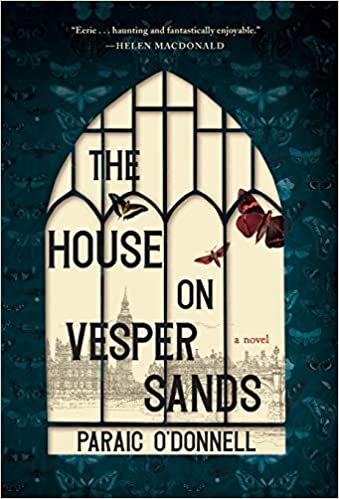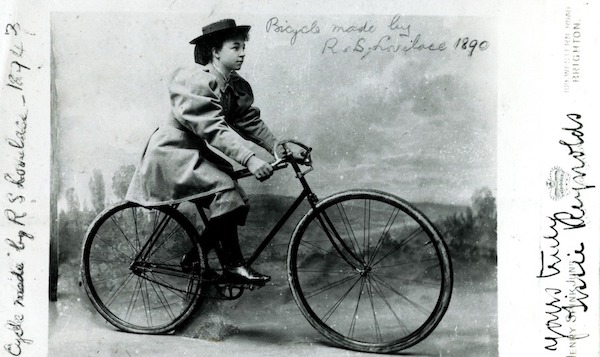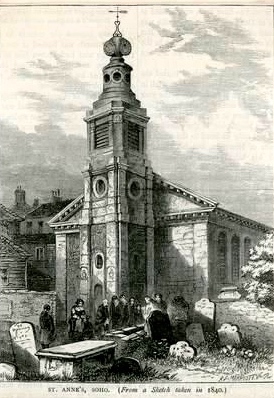“She took her place on the ledge, spreading her arms a little way to steady herself, and it was only then – sensing its intimate scatter against her knuckles – that she remembered the snow. It was everywhere, when she lifted her face, falling now with soft insistence. It felt tender almost, like a final kindness, and when the moment came it was not like falling at all.” – Esther Tull
 In a novel which defies genre, written in a style which feels like a cross between Wilkie Collins and Bram Stoker, Irish author Paraic O’Donnell creates a complex mystery set in London in the late nineteenth century. Fun to read, often humorous, just as often mysterious or violent, and filled with vibrant description of all kinds, The House on Vesper Sands stands out for its uniqueness among all recently released novels for the year. Providing gothic thrills at the same time that it also creates an intense picture of Victorian spiritualism, ghostly manifestations, and changing church practices, it is structured as a formal religious Requiem from 1893, consisting of six parts, including the Requiem Aeternam (a Mass for the Dead), Kyrie (a prayer asking “Lord, Have Mercy”), and Dies Irae (Day of Wrath) through the Lux Perpetua (Eternal Light), the title of the short last section and epilogue. The narrative itself quietly parallels the deep feelings suggested by a Requiem, but at the same time it features ironies and elements of humor which will provide some hearty laughs. And always, always, the author remembers that his primary goal with this novel is to entertain.
In a novel which defies genre, written in a style which feels like a cross between Wilkie Collins and Bram Stoker, Irish author Paraic O’Donnell creates a complex mystery set in London in the late nineteenth century. Fun to read, often humorous, just as often mysterious or violent, and filled with vibrant description of all kinds, The House on Vesper Sands stands out for its uniqueness among all recently released novels for the year. Providing gothic thrills at the same time that it also creates an intense picture of Victorian spiritualism, ghostly manifestations, and changing church practices, it is structured as a formal religious Requiem from 1893, consisting of six parts, including the Requiem Aeternam (a Mass for the Dead), Kyrie (a prayer asking “Lord, Have Mercy”), and Dies Irae (Day of Wrath) through the Lux Perpetua (Eternal Light), the title of the short last section and epilogue. The narrative itself quietly parallels the deep feelings suggested by a Requiem, but at the same time it features ironies and elements of humor which will provide some hearty laughs. And always, always, the author remembers that his primary goal with this novel is to entertain.
Divided into three subplots, all of which eventually connect, the novel begins in elegant Mayfair with the dramatic scene quoted at the opening of this review. Esther Tull, a seamstress in extreme pain from having cut her torso and embroidered important information on it, believes that suicide is her only way out, and by cutting a message on her body she hopes to be at peace upon her death. Every day she has worked many hours sewing in Lord Strythe’s Mayfair residence under the supervision of his staff, all of whom have information about her past that has kept her toiling with almost no pay or time off. The second plot features Gideon Bliss, a young man and orphan whose guardian uncle, a “reverend doctor,” is paying for him to attend Cambridge University, though the two have had almost no contact and barely know each other. Gideon has no money and no real home, and when classes are not in session, he sometimes has to sleep in churches and go without food. On one evening, when he goes into St. Anne’s Church to get out of the cold, he finds an unmoving woman, Angela Tatton, prostrate in front of the altar, obviously very ill. Angela believes “They’ll be here soon…It’s too late for me,” but he does not understand her whispers. He does recognize that she works for his uncle, and he thinks he may see “brightness” around her, but suddenly all that changes – he finds everything going dark around him. When he awakens, she is gone.

Tessie Reynolds, a late Victorian cycling athlete on whom Octavia may have been modeled. From www.sheilahanlon.com
The third plot, one that provides a good deal of amusement, stars Octavia Hillingdon, a writer who rides a bicycle all over London in pursuit of her stories which focus largely on women. Bold and confident, she is on her way to an all-male social club to contact someone who might publish some of her writing. On her way, she notes the headlines of the latest newspaper: “Spiriters feared abroad once more.” Suddenly, her own eyesight dims and she fears she is passing out as she reads that another young girl has disappeared. Later, at a party at Ashenden House, she meets Charles Elphinstone, the Marquess of Hartington, who serves in the House of Commons and from whom she learns that Lord Strythe is also missing.

St. Anne’s Church, where Gideon finds Angela Tatton. This church was destroyed by bombs during World War II.
As can be seen here in this brief summary of the first few pages, author O’Donnell presents separate plot lines, but he is careful to create clear connections among them throughout the novel, even in these opening sections. The missing Lord Strythe in the “Octavia plot,” the third plot, is the person for whom the first woman, Esther Tull, is working when she jumps to her death from the top floor of his Mayfair house. Angela Tatton, almost unconscious at St. Anne’s Church when Gideon Bliss discovers her, is an orphan whom Gideon’s uncle, Reverend Doctor Herbert Neuilly, has been particularly interested in saving from a terrible life, a woman Gideon knew and liked in the time before his uncle’s circumstances “changed.” The visions that bicycle-riding Octavia sometimes sees, are not unlike those of orphan Angela, though their lives are very different. In a case of extreme coincidence, a policeman, Detective Inspector Cutter, who answers the door of the address where Gideon’s uncle, Rev. Neuilly, is supposed to be living, thinks Gideon is an underling sent to help him with his police work, even when Gideon refers to his studies at Cambridge. Since Gideon needs work and food, he goes along with the pretense that he is working for the police, doing this work conscientiously, and eventually becoming the anchor of the novel.
The action throughout the novel is nonstop, and some characters who seem to be normal, or nearly so, at the beginning, become more and more absurd as time goes on. Additional young women disappear, and ghostly apparitions appear. Some people who are thought dead prove to be very much alive, and no one is guaranteed to be who the reader thinks s/he is. At various times, people appear to be drugged or intoxicated, some visit mediums for relief, some attend spiritualist gatherings, and some speak in other voices. Most alarmingly, still others appear to become translucent before they begin to disappear – piece by piece. The climax occurs when several of the more “reliable” characters go to Vesper Sands, the place which Lord Strythe has considered “home,” and the action – every piece of it – is resolved. The “spiritualist” aspects never overwhelm the sense that the characters are “real,” and the occult scenes are especially fun to read, primarily because they are so often witty and drily humorous. For all the seeming wildness and lack of control, author O’Donnell has planned every detail, making this book a unique and welcome relief in a time in which real life is crazy enough.
Photos. Mayfair in the snow is from https://www.alamy.com
Tessie Reynolds, a late Victorian cycling athlete on whom Octavia may have been modeled, appears on http://www.sheilahanlon.com
St. Anne’s Church in London, where Gideon finds Angela Tatton, was destroyed by bombs during World War II. https://www.pinterest.com
The author’s photo is from https://www.independent.ie
Rev. Neuilly, Gideon’s guardian, impresses him as young man when he prepares a live peacock butterfly for mounting, presenting Gideon with a “puzzle he was not yet equipped to solve.” https://en.wikipedia.org



